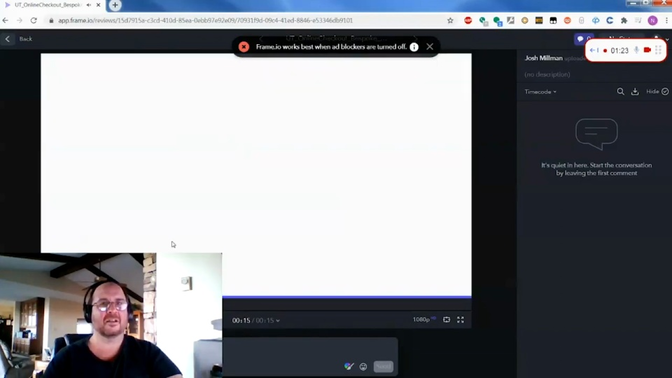
The landing-page lie: align channel expectations before the bounce happens

We’ve all been there.
You click on a promising ad, a compelling social post, or an enticing email. The headline hooked you, the offer felt relevant, and you were ready to take action.
Then the page loads, and it’s nothing like what you expected. The message is different. The offer is buried. The tone is off. You feel… misled. And in a split second, you bounce.
For marketers, this “post-click disappointment” is a silent budget killer. Paid traffic bounce rates alone can go as high as 54%, meaning the journey has ended before potential leads explore a second page. The problem isn’t always your creative or targeting. More often, it’s a mismatch between what the channel promised and what the landing page delivers.
The good news? That gap is measurable, diagnosable, and fixable. But only if you go beyond surface metrics and see your funnel through your visitors’ eyes.
Why the post-click trust gap exists
Marketers spend months crafting campaigns, fine-tuning targeting, and perfecting creatives. But once the click happens, many teams shift focus to generic landing pages or standardised site flows.
The problem: not all clicks are created equal.
- Paid search visitors often expect immediacy: clear offers, visible CTAs, and no fluff.
- Organic visitors might be in research mode, expecting depth and credibility.
- Email traffic often arrives warm, looking for continuity from the message they opened.
- Social visitors lean toward storytelling and visual reinforcement of what they just saw.
When every visitor gets the same one-size-fits-all experience, you inevitably disappoint someone. It’s the mismatch between marketing promises and on-site reality that drives exits and not just the absence of compelling content.
ON-DEMAND WEBINAR
Unlock higher conversions: understanding what users really want
Why analytics alone can’t tell you why they leave
Let’s say that your paid traffic bounces 20% more than your organic numbers. Raw numbers cannot tell us how customers interacted with your brand.
Traditional analytics show the sequence (i.e. from entry page, time on site, until the exit) but they can’t tell you whether the copy felt irrelevant, the layout confused them, or the offer wasn’t where they expected it.
This is where user validation testing comes in. Methods like usability tests, remote observation, and targeted surveys reveal the human side of the journey:
- Did the page meet the visitor’s expectations from the click source?
- Could they find what was promised without friction?
- Did the tone and content align with their intent?
Without these insights, optimisation becomes guesswork.
What high-performing teams do differently
The most effective marketing and web teams treat the post-click moment as the real start of the customer journey, not the end of acquisition. Here’s how they close the trust gap:
1. Set channel-specific expectations from the start
Before launch, define what success looks like for each channel. Ask: “If I’m a visitor from [paid/search/email/social], what do I expect to see in the first five seconds?”
2. Test before you spend
Use small-scale, channel-specific usability tests to validate if the experience matches the creative or message. For example, show participants a paid ad, then direct them to the landing page and observe whether they find the offer instantly.
3. Adjust experiences for re-engagement
Returning visitors often have different goals than first-timers, so refining navigation for high-traffic entry points can improve their navigation around your site. You don’t just optimize pages, you improve continuity for re-engaged traffic.
4. Collaborate across teams
There is power in cross-functional collaboration and taking away digital silos. Weekly alignment between marketing, UX, and content teams ensures that what’s promised in the ad is what’s delivered on the page.
CASE STUDY
HP Customer Story
Making validation part of your marketing rhythm
Validation isn’t a one-and-done project. It’s a discipline.
Use our framework to know four key timing windows for testing:
- Before ideas go live – validate messaging and flow before creative is locked.
- Prototype stage – catch mismatches before development is complete.
- Pre-launch – fix friction before spending big on media.
- Post-launch – optimise continuously as campaigns evolve.
For Purina, applying these principles to their Pup Powered app navigation led to a 365% increase in engagement from social and email campaigns. They used real feedback to pinpoint and fix the post-click drop-off points that were unique to each channel.
Below is an example of testing UserTesting did prior to launching several TV commercials.

From physical to digital: Crafting the experience
Whether it’s visiting a store, attending an event, or using a website, people form expectations before they even arrive. Those expectations are set by what they’ve seen or heard: marketing materials, word of mouth, product descriptions, or social proof.
If the actual experience doesn’t match the promise, the result is going to be disappointment. Digital experiences are no different. If your “brochure” (ad/email/search snippet) promises one thing, and your “venue” (landing page/site) delivers another, visitors won’t stick around to complain; they’ll just leave.
The most successful brands manage this by treating the entire experience as one connected journey, They:
- Audit the current journey from a first-time visitor’s perspective
- Continuously update based on real feedback
- Adapt experiences to different visitor types or entry points, so each feel relevant and consistent
Every touchpoint, from the ad click to repeat visit, reinforces your credibility and keeps users moving forward.
Closing the gap is about trust, not just clicks
Every channel click is a promise. Break it, and you lose the visitor and your credibility.
Marketers who win in 2025 and moving forward will be those who:
- See post-click optimisation as just as critical as acquisition targeting
- Validate experiences with real users before scaling spend
- Collaborate with UX to design journeys that start at the click, not the conversion form
- Continuously refine based on feedback, not assumptions
Because when you align the page to the promise, you reduce bounce and build relationships.
Key takeaways
- Every click is a promise: Mismatches between marketing messages and landing pages show gaps in your thought leadership, driving bounces and wasted budget.
- Analytics alone can’t reveal the “why”: Use user validation testing to uncover expectation gaps and friction points unique to each acquisition channel.
- Continuous alignment builds credibility: Regularly test, refine, and tailor landing experiences to match the expectations of paid, social, email, and organic visitors.
FAQs
Q: How do I use CX data to align promises with customer perceptions proactively?
A: Start by pulling insights from across your CX data sources (e.g. surveys, NPS, analytics, social sentiment, support logs) so you can see how customers actually perceive your brand in real time.
Then, map the customer journey to pinpoint where expectations are formed and where delivery might fall short. This allows you to spot gaps before they become churn triggers and adjust messaging or experience touchpoints accordingly.
Q: How can I set clear expectations across all channels before customer interactions?
A: Be upfront and specific in your messaging from the very first touchpoint. Avoid overpromising, as this sets you up for disappointment if the reality doesn’t match.
Maintain a consistent brand voice, tone, and message across paid, social, email, organic, and support channels. That way, no matter where customers encounter you, they’ll know exactly what to expect.
Q: What methods ensure message consistency to prevent expectation gaps?
A: Define a clear brand identity and distill it into a handful of core key messages that every team member can communicate confidently.
Support this with a messaging guide covering your brand voice, tone, and style, so all your content reinforces the same promise, whether it’s coming from marketing, sales, or support.
GUIDE





